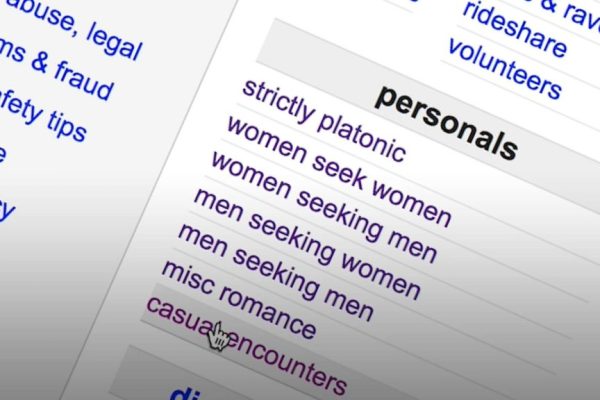The internet is an essential part of our lives, and we rely on it for our day-to-day tasks. However, with the increasing use of data-hungry applications and services, data caps and throttling have become common issues faced by many internet users.
Data caps are limits internet service providers (ISPs) set on the amount of data a user can consume in a given billing cycle. At the same time, throttling intentionally slows down a user’s internet speed once they exceed their data cap.
This article will discuss some tips and tricks to help you deal with data caps and throttling and get the most out of your internet service. So without further ado, let’s begin.
Table of Contents
Understanding Data Caps
Before we dive into the tips and tricks to deal with throttling, it’s essential to understand what data caps are and how they work. Data caps are limits set by ISPs on the amount of data a user can consume in a given billing cycle. These caps can be either hard or soft. A hard cap means your internet connection will stop working until the next billing cycle once you reach your data limit. A soft cap means you can still use the internet, but your speed will be reduced.
Data caps are typically set to prevent network congestion and ensure all users get a fair share of the available bandwidth. However, some ISPs also use data caps to increase revenue by charging users for additional data or selling plans with higher limits.
Tips to Deal with Data Caps
To deal with data caps, you can follow these tips:
-
Monitoring Your Data Usage
To avoid exceeding your data cap and triggering throttling, monitoring your data usage is essential. Fortunately, there are several ways to do this, depending on your internet service provider and the devices you use to access the internet.
Most ISPs offer data using tools that provide real-time information about your data usage, including how much data you have left before reaching your cap. Additionally, you can use your device’s data usage settings or install third-party apps that track your data usage across multiple devices. You can take proactive steps to reduce your data usage and avoid triggering throttling by monitoring your data usage.
-
Use Data-Saving Features
Using data-saving features is another effective way to deal with data caps and throttling. Many devices and applications offer data-saving features that can help you reduce your data usage without sacrificing too much in terms of functionality or performance.
For example, some web browsers have built-in data-saving features that compress web pages and images to reduce data usage. Some video streaming services also offer reduced video quality options to use fewer data. Using these data-saving features, you can reduce your data usage and avoid exceeding your data cap, which can help you avoid throttling and ensure that you have fast and reliable internet speeds.
-
Use Wi-Fi Whenever Possible
One of the easiest ways to reduce mobile data usage and avoid hitting your data cap is to use Wi-Fi whenever possible. Many places, such as cafes, libraries, and hotels, offer free Wi-Fi, and many mobile devices allow you to connect automatically to trusted Wi-Fi networks.
Wi-Fi saves your mobile data when you need it, such as when you’re away from a Wi-Fi network. Additionally, Wi-Fi connections are often faster and more reliable than mobile data connections, which can help you avoid throttling and ensure fast and consistent internet speeds. Just connect to secure Wi-Fi networks to protect your data and privacy.
-
Disable Automatic Updates
Another way to reduce your data usage and avoid exceeding your data cap is to disable automatic updates on your devices. Many applications, including operating systems, web browsers, and mobile apps, automatically download updates in the background, which can consume a significant amount of data without you even realizing it.
By disabling automatic updates, you can control when and how updates are downloaded, which can help you reduce your data usage and avoid exceeding your data cap. Instead, manually check for updates when connected to a Wi-Fi network, or set your device to download updates only when connected to Wi-Fi. This simple step can help you avoid unexpected data usage and prevent throttling.
-
Use a Data Compression App
Using a data compression app is another effective way to reduce data usage and avoid hitting your data cap. These apps work by compressing data before it’s sent over the internet, reducing the needed data. Some web browsers also offer built-in data compression features that work similarly.
Using a data compression app or feature, you can significantly reduce your data usage without sacrificing too much functionality or performance. Just be aware that some types of data, such as media-rich content, may not compress as much as others, so your savings may vary depending on the type of content you access.
Understanding Throttling
Throttling is a term used to describe the intentional slowing down of internet speeds by your internet service provider (ISP). ISPs may throttle your internet speeds if you exceed your monthly data cap or use too much data during peak hours when network traffic is high. Throttling can be frustrating, making even simple tasks like browsing the web or checking email feel slow and sluggish.
Tips to Deal with Throttling
You can avoid throttling by following these tips:
-
Check Your Plan
To avoid exceeding your data cap and triggering throttling, checking your Spectrum in Bakersfield plan regularly is important. Some plans may offer unlimited data, while others may have lower caps or charge overage fees for exceeding your limit. By knowing your plan’s details, you can better manage your data usage and avoid any unexpected charges.
Additionally, you may be able to upgrade your plan to a higher data cap or switch to a provider that better suits your needs. It’s also important to understand any additional fees or restrictions that may apply to your plan, such as speed limits during certain hours or data usage caps for specific applications
-
Use a VPN
A virtual private network (VPN) can also help you avoid throttling and protect your privacy online. A VPN encrypts your internet traffic and routes it through a private network, making it more difficult for your ISP to monitor and throttle your internet speeds. Additionally, some VPNs offer data compression and optimization features that can help you reduce your data usage and avoid exceeding your data cap.
However, it’s important to choose a reputable VPN provider and understand that using a VPN may also impact your internet speeds. Some VPNs can slow down your internet speeds, so choosing a provider that offers fast and reliable service is important.
-
Limit Bandwidth-Heavy Activities
Another way to manage your data usage and avoid triggering throttling is to limit your bandwidth-heavy activities. This includes things like streaming high-definition video, downloading large files, or playing online games that require a lot of data.
By reducing the amount of data you use for these activities, you can help ensure that you stay within your data cap and avoid triggering throttling. You can also adjust the settings on certain applications or devices to reduce their data usage, such as lowering the video quality on streaming services or disabling automatic updates on your devices.
-
Schedule Downloads
Scheduling downloads during off-peak hours can help you manage your data usage and avoid triggering throttling. Some ISPs may have specific peak hours that restrict internet speeds or data usage, so scheduling downloads or uploads outside of these hours can help you maximize your internet speeds and reduce your data usage during peak times.
Additionally, some applications or devices may allow you to schedule downloads or updates, which can help you manage your data usage and avoid unexpected charges or restrictions.
-
Contact Your ISP
Suppose you’re experiencing frequent throttling or exceeding your data cap despite taking steps to manage your data usage. In that case, contacting your internet service provider (ISP) may be worth discussing your options. Some ISPs may be willing to work with you to find a solution, such as upgrading your plan or providing tools to help you manage your data usage.
Additionally, suppose you suspect your ISP is engaging in unfair or deceptive practices, such as intentionally slowing down your internet speeds. In that case, you may be able to file a complaint with regulatory agencies or consumer protection organizations.
You should also keep detailed records of any interactions with your ISP, including dates, times, and the names of any representatives you speak with, as well as any documentation of your data usage and internet speeds.
Final Thoughts
Data caps and throttling can be frustrating, but with the right tips and tricks, you can deal with them and get the most out of your internet service. You can avoid exceeding your data cap and getting throttled by monitoring your data usage, using data-saving features, and limiting bandwidth-heavy activities.
If you experience throttling, using a VPN, scheduling downloads, and contacting your ISP can help you get back up to speed. Remember, the key to dealing with data caps and throttling is to be proactive and take control of your internet usage.





